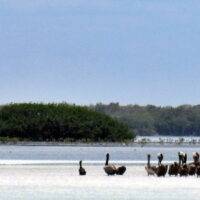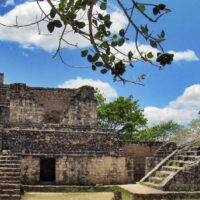4 days in Mexico City – Complete itinerary + travel guide
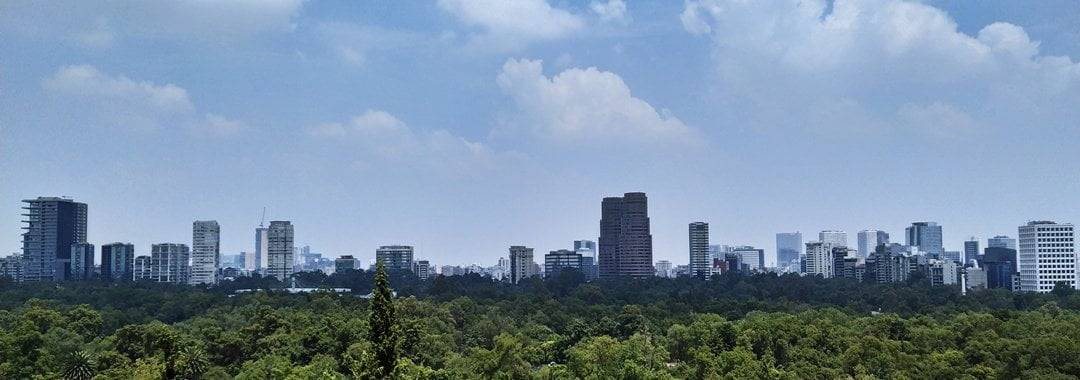
Last Updated on April 17, 2023
Located 2 500 meters above sea level, Mexico City is the fourth most populated city in the world. The city has a lot to offer, and everyone will find something he likes doing there. From visiting museums and Pre Hispanic ruins to sampling street food and watching a traditional wrestling match, I guarantee you’ll have a good time. Read on to discover what to do in 4 days in Mexico City.
Disclaimer: this post contains affiliate links, which means that if you click on any links and make a purchase I’ll get a small commission, at no cost to you.
Travel tip: before any international trip, make sure you get a good travel insurance.

How to spend 4 days in Mexico City:
- Day 1: Visit the UNAM, its murals, sculptures, and contemporary art museum, then head for the charming Coyoacan district.
- Day 2: Visit Chapultepec, its castle, and the anthropology museum.
- Day 3: Visit the historical center and the Zocalo.
- Day 4: Take a day trip to visit the ruins of Teotihuacan then head to the “Pueblo Magico” (magical town) of Tepotzotlán.
Day 1 – The UNAM and the Coyoacan district
Start your first day in Mexico City, exploring the south part of the city. You can start at the UNAM, Mexico’s best public university. The campus is huge and is an art hub. You can start by watching the murals, depicting the history of Mexico. Next, you can head for the cultural center and take a walk to see the sculptures. The sculptures are surrounded by nature, and at some points, you get an amazing view over Mexico City. You can also visit the MUAC, the Contemporary Art Museum. They often change exhibits and invite local as well as international artists.


You can check what current exhibits they have here. The museum is open from Wednesday to Sunday, and the entrance fee is $40 pesos.

Then you can have lunch at the MUAC restaurant or head to Coyoacan directly and have lunch there. From the university, the easiest is to start at the Alfredo Guati Rojo National Museum of Watercolor, but you can also do the following itinerary the other way around.
Coyoacan is mostly a residential neighborhood where you can enjoy strolling around its paved streets and peaceful parks. You can visit all these places on foot.
Start by visiting the Watercolor Museum (open every day from 10 AM to 6 PM – No entrance fee), from there, go up the Francisco Sosa Street to the National Museum for the Popular Cultures. The exhibits there focus on contemporary, popular, and folk art. It’s not really big, you can visit it in under an hour. It’s closed on Monday and is open from 10 AM to 6 PM (8 PM from Friday to Sunday). The entrance fee is $15 pesos.

Next, don’t miss the Coyoacan market, you can eat something there and look at local crafts or try one of the many local fruits. Once you’re done comes the highlight of the tour, a visit to La Casa Azul, Frida Kahlo’s house. I loved the house and its garden, even with the hoard of tourists, it still feels peaceful and relaxing. You can visit the entire house, with the original furniture and see some paintings from Frida and from Diego Riviera.
The house is closed on Mondays and is open from 10 AM (11 AM on Wednesdays) to 5:45 PM. The entrance fee is $230 pesos ($250 on weekends) plus $30 if you want to take photos inside the house. There’s a limited number of people allowed in per day, so you might want to buy your tickets beforehand is you’re visiting during high season, public holidays, or on a weekend.
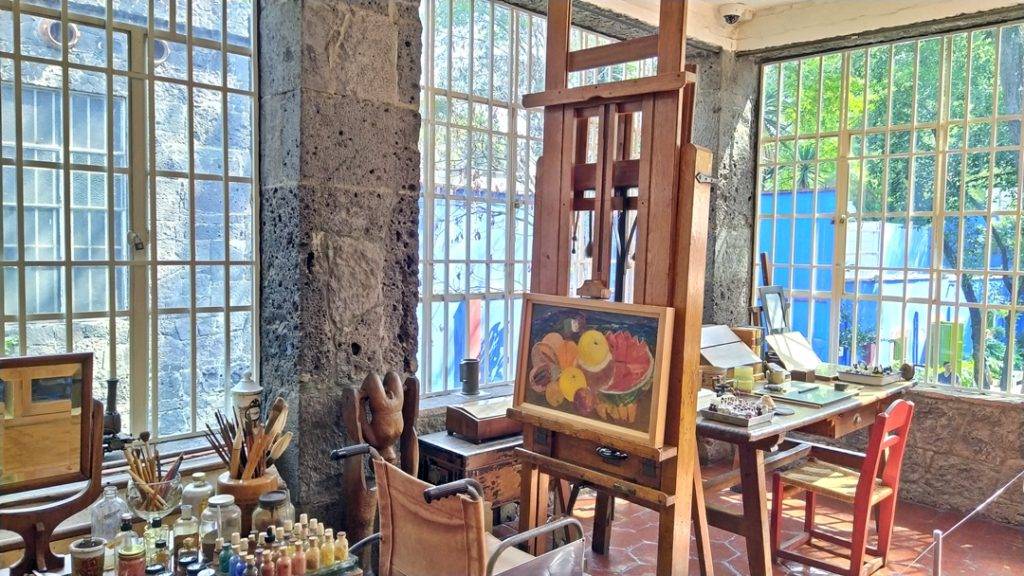
You’re last stop of the day, is the Trotsky House, a place rich in history. After being exiled from Russia, and having lived in a few different countries, Trotsky ended up in Mexico. He first stayed at the Blue House with Frida Kahlo and then moved to the house you can visit today, where he was assassinated. The house is closed on Mondays and is open from 10 AM to 5 PM. The entrance fee is $40 pesos.
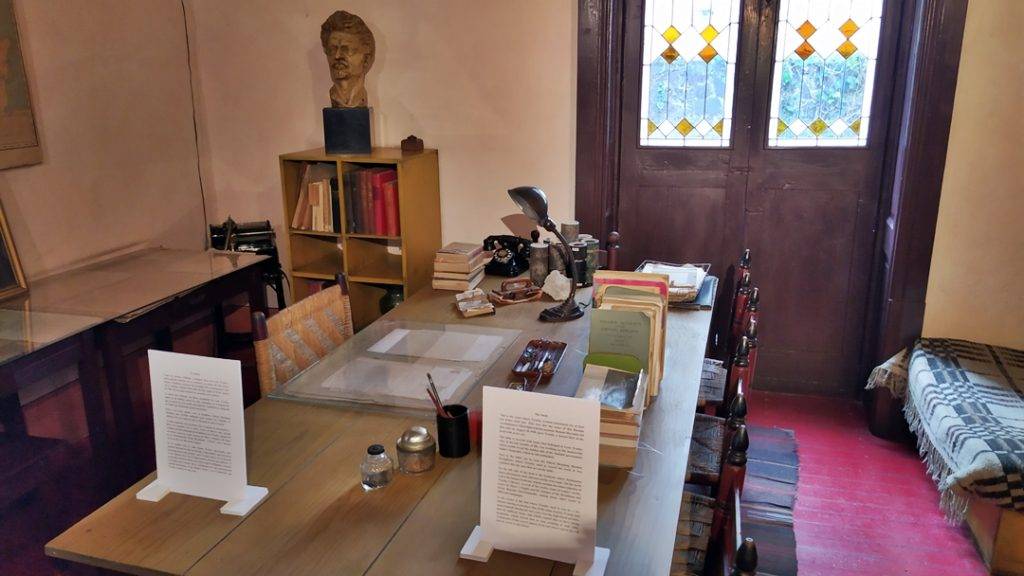
If you see you have more time, you can also visit the “Parque Nacional El Historico Coyoacan.”
Day 2 – Chapultepec and the Museum of Anthropology
Chapultepec is a must-see in your 4 days in Mexico City. Chapultepec is Mexico City’s biggest park and the best place to detox from all the noise and pollution of the city. In the park, you’ll find El Castillo (the Castle), originally built as a summer house for the viceroy, it was later turned into the military academy, then into the emperor house, later into the presidential residence until 1939 when it became a museum.

It’s now open to the public and can you visit most of it. The architecture is great, and the original furniture has been preserved; some parts reminded me of Versailles. Apart from what’s inside, you’ll get a breath-taking view over Mexico City and the surrounding mountains if it’s a clear day.
The Chapultepec Castle is closed on Monday and is open from 10 AM to 5 PM. The entrance fee is $75 pesos. You cannot enter with food or drinks, even water. They have lockers available next to where you buy the tickets.
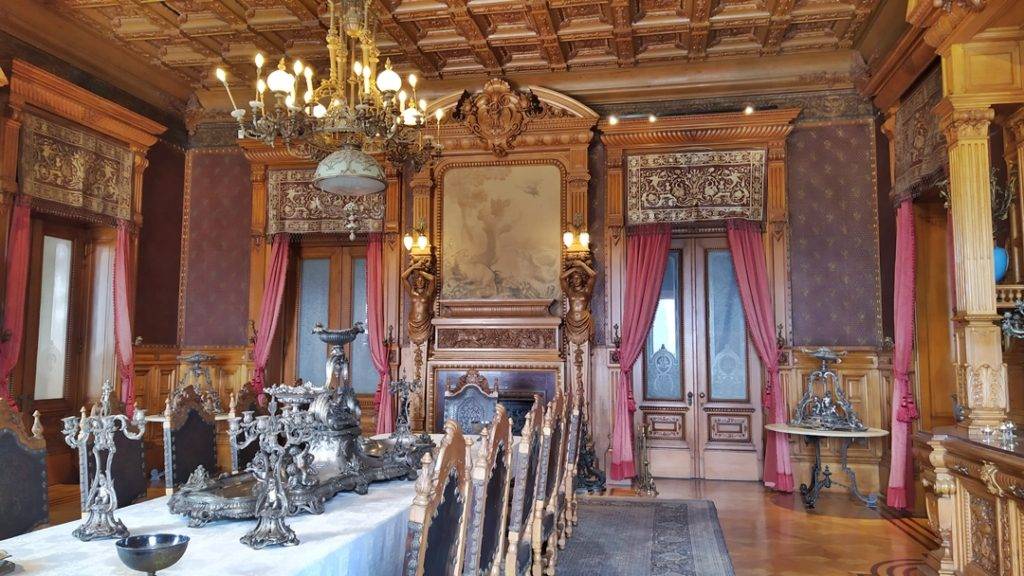
You can then have lunch at one of the food stands inside the park and witness the fine art of Mexican hustling, which consists of waiters from all the stands screaming at the top of their lungs to attract arriving customers. A great option if you want to have a good laugh and eat quickly, not so much if you want to have a peaceful lunch.
Next head to the National Museum of Anthropology, the city’s biggest, most visited museum, and a must-visit during your 4 days in Mexico City. The museum is huge and can take days to visit fully. I visited it in under 3 hours but without reading all the explanations. If you want to read everything, count at least a day, or you can just decide to focus on some of the rooms and not the entire museum.

The museum retraces the origin of Mexico through its people and traditions, from the Pre-History to today,
The National Museum of Anthropology is open from Tuesday to Sunday (closed on Mondays) from 9 AM to 7 PM. The entrance fee is $75 pesos.
Day 3 – Zocalo and Historic center
Prepare for a day of walking, the historic center is filled with ancient churches, cute streets, museums, and architectural wonders. If you don’t have much time or are not up for walking, you can take one of the tour buses. You can also join a free walking tour.
You can visit the places listed below in the order they are, without forgetting to get lost in the small streets in between.
For a great breakfast and to start your day on the right food, head to Café Regina, on Calle Regina (their waffles are to die for).
Palacio de Bellas Artes
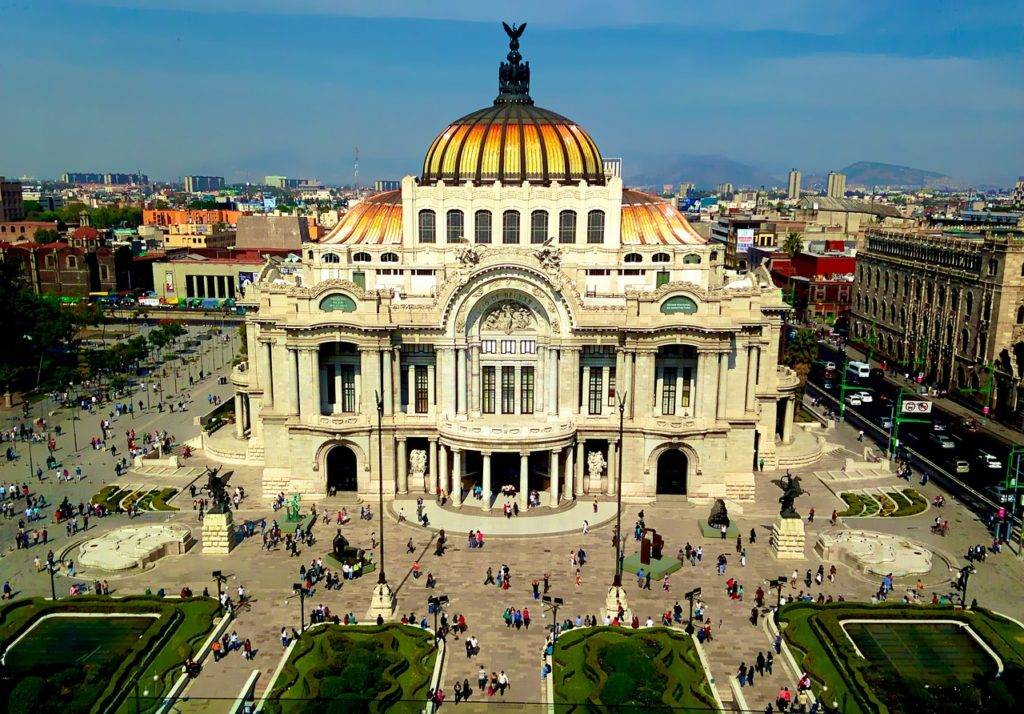
The Palace of Fine Arts is one of the city’s architectural highlights, you cannot miss it during your 4 days in Mexico City. In front of it, you’ll find a Sears, you can go up to have a view from above. Around the palace, there are a few rooftop restaurants worth visiting for the view they offer.
Inside the palace, you’ll find a popular art museum, a concert hall, a theater, and halls featuring paintings and sculptures. The entrance fee is $70 pesos. You can check the event calendar here. The palace is open to visitors from Tuesday to Sunday, from 10 AM to 5 PM.
Fun facts: since the construction was completed in 1934, the building has sunk more than 15 feet into the ground. Many buildings in the center, especially churches, appear to be leaning, and the entire city is sinking, little by little. The city is built over a reservoir, and when the water level decreases, the earth above it sinks. Read more about it here.
Torre Latinoamericana
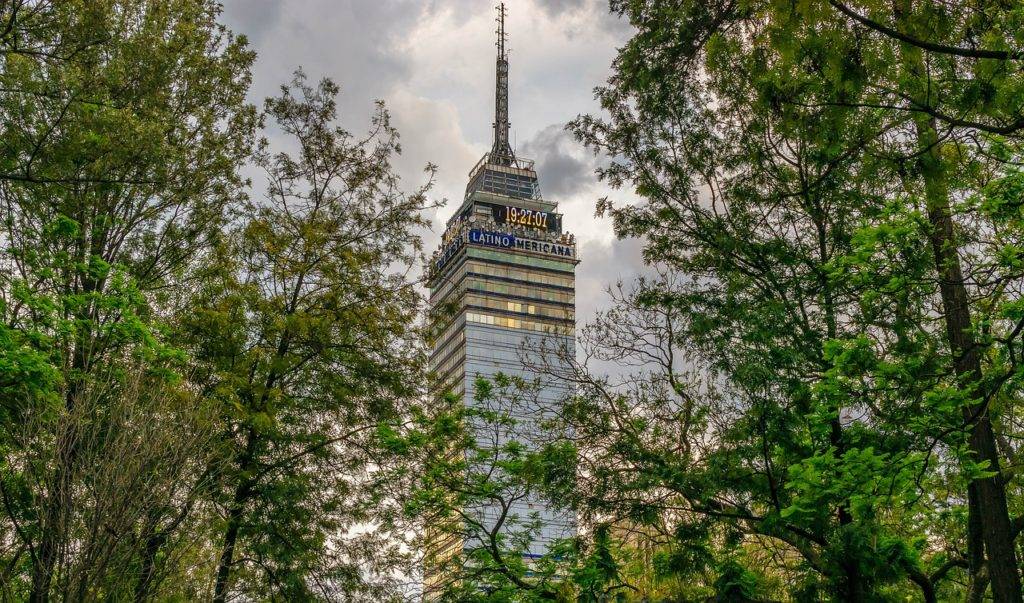
Right next to the Palace of Fine Arts is the Latinoamerica tower. From there, you’ll get an impressive view all over Mexico City and the Historic Center. The tower is 600-foot high and has 45 floors.
The entrance fee is $120 pesos, and you can visit it every day from 9 AM to 10 PM.
Zocalo
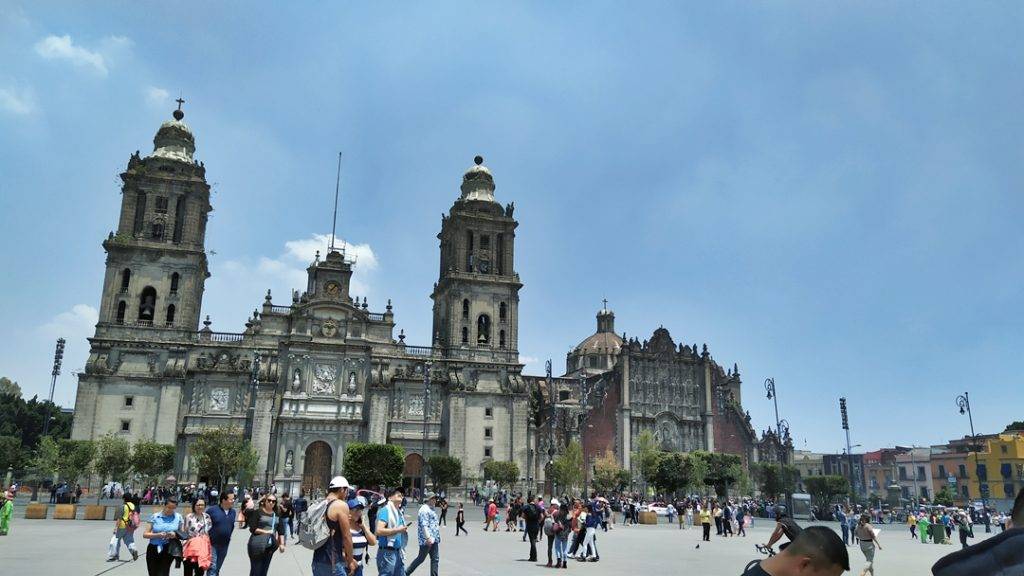
Another emblem of the city, the Zocalo is a must-see during your 4 days in Mexico City. This huge plaza, also known as the Constitution Plaza, is rich in history and an important place for Mexicans. It’s also the world’s second-biggest plaza.
Around it, you’ll find the presidential palace, official buildings, and the Metropolitan Cathedral. Locals often gather there to sell craft, demonstrate traditional dance, or offer purification rituals.
Museo Nacional de las Culturas
Located in a colonial building and ancient money factory, the National Museum of Culture features exhibits presenting cultures from all over the world, past and present.
The entrance is free, and the museum is open from 10 AM to 5 PM (closed on Mondays).
Palacio Nacional

The Palacio Nacional was built in 1522 and is now the center of the federal executive power. It was closed to the public until recently, and you can now visit part of it. The main features are the garden full of cats and Diego Riviera’s murals depicting Mexico’s origins, traditions, and history.
The entrance is free (they keep your ID at the entrance), and the site is open from Tuesday to Sunday from 9 AM to 5 PM.
Templo Mayor
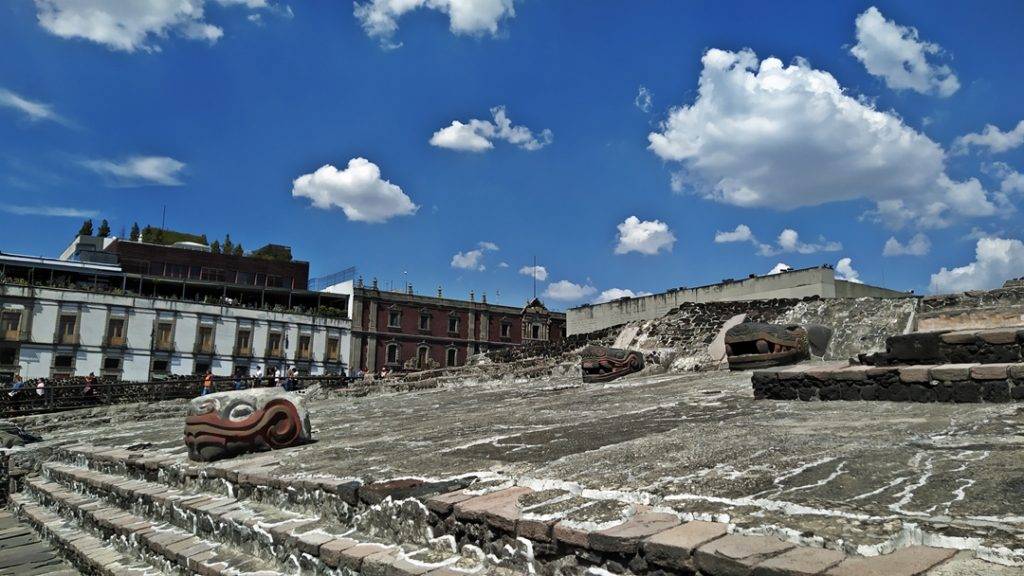
The Templo Mayor is located right next to the Metropolitan Cathedral on the Zocalo. It’s all that’s left from the ancient Aztec city that stood there when the Spaniards invaded the country. Every Aztec building was destroyed, the rocks were then used to build churches and other important buildings.
You can see most of it for free from the platforms above it, but if you want to see some of the paintings and sculptures, and access the museum, you’ll need to pay. The entrance fee is $70 pesos, and the site is open from Tuesday to Sunday from 9 AM to 5 PM.
Plaza Garibaldi
Plaza Garibaldi is where you go to see Mariachis, the closer you get, the more you’ll see. Go there at night and not during the day. You can sample some tequila and mezcal at the Tequila Museum, listening to some traditional songs. There’s also a great food market there is you want to sample some local dishes.
Day 4 – Day trip to Teotihuacan and Tepotzotlan
Teotihuacan is an ancient Mesoamerican city located near Mexico City. Teotihuacan means “the place where the Gods were born,” the original name is unknown. Not much is known about the site’s origin, traces of settlement have been found dating back as far back as 300 BC, but archaeologists disagree on who founded and populated the city at its early stage.
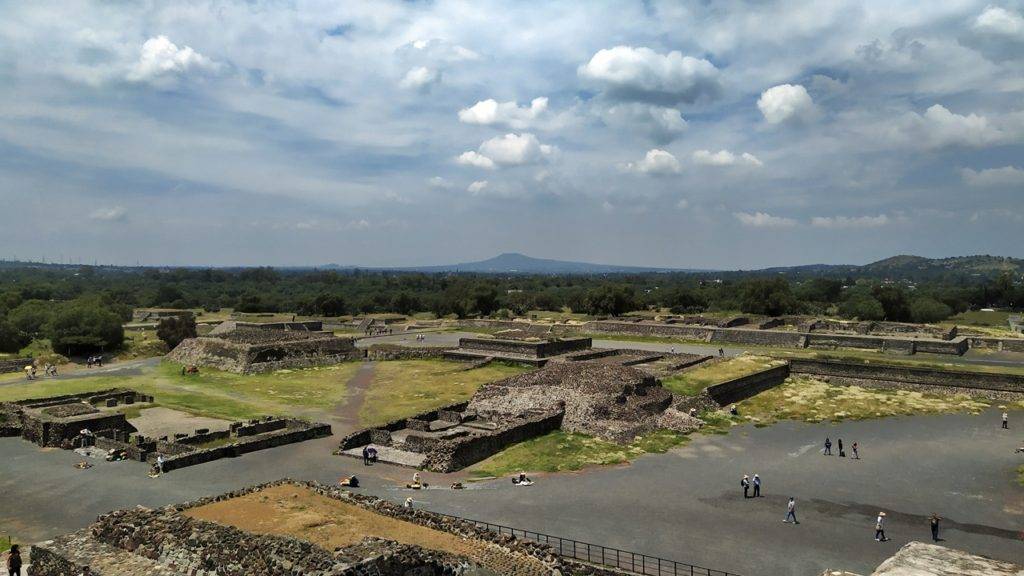
Around 400 AD, Teotihuacan dominated most of the region and became an important trading center. When the Aztecs found the site in the 1400s’, the site had been abandoned for centuries for unknown reasons.
Teotihuacan is impressive, for centuries, the city was the biggest one in this part of the world, and such great cities were only seen later in history. What has been excavated so far allow us to understand how the city was planned. The Pyramid of the Sun is one of the highest pyramids in the world (216 feet), and from the top, you’ll get an impressive view over the whole site.
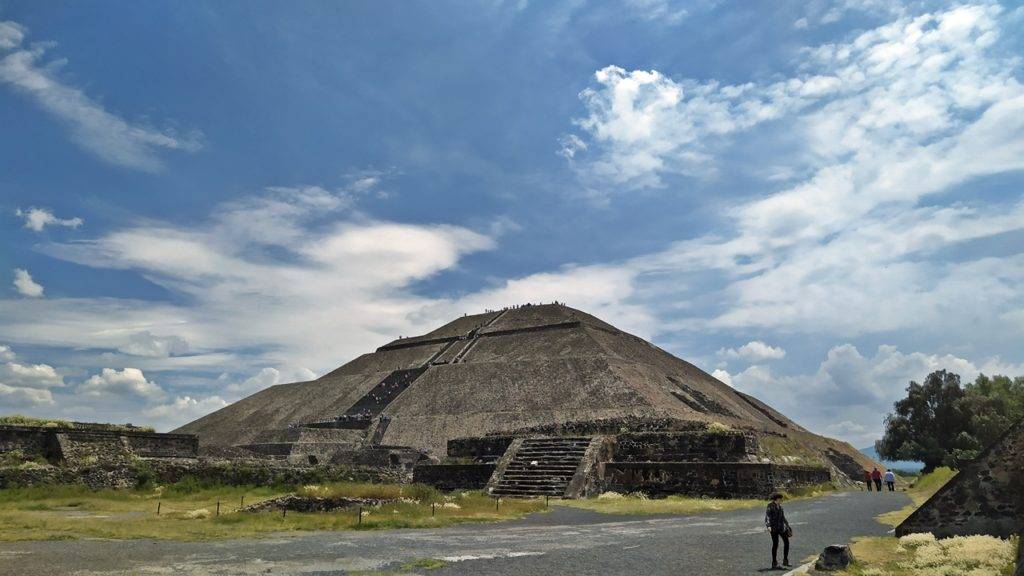
How to get there:
- Join a tour
- Hire a cab
- Rent a car
- By public transportation: head for the “Terminal del Norte,” when you enter the terminal walk to your left until you see the stand for the Teotihuacan bus company. Buses leave every 30 minutes or so. There are three stops for the site, you can stop at the first one and catch the bus back at the third one.
What to bring:
- Plenty of water (it’s expensive inside)
- Some snacks (you can have lunch at one of the restaurants outside)
- A hat, sunglasses, and sunscreen (the sun can be strong even when it’s not that hot).
Opening hours and entrance fee:
Open every day from 9 AM to 5 PM – Entrance fee: 75 pesos
If you have more time…
If you manage to be there at 9 AM, you’ll probably be back in the city pretty early, which leaves you time to visit Tepotzotlán (not to be confounded with Tepoztlán). Tepotzotlán is a Pueblo Magico, in other terms a charming little village.
Alternatively, on day 4 you can take a day trip to visit Puebla, known for its colonial historic district and tasty food.

What to do there: Walk around the paved street gazing at cute houses, have some food at the market, visit the Templo San Fransico Javier, the Museo Nacional del Virreinato, the Convent, and check out the craft market.
If you have more time, you can visit the famous Arcos del Sitio, an aqueduct surrounded by nature (there’s no public transportation there, you’ll need to rent a car or hire a cab).
How to get there: Next to where you bought your bus ticket to Teotihuacan, there’s a company called Flecha Roja, and they have buses going to Tepotzotlán every hour, starting at 05:45 am.
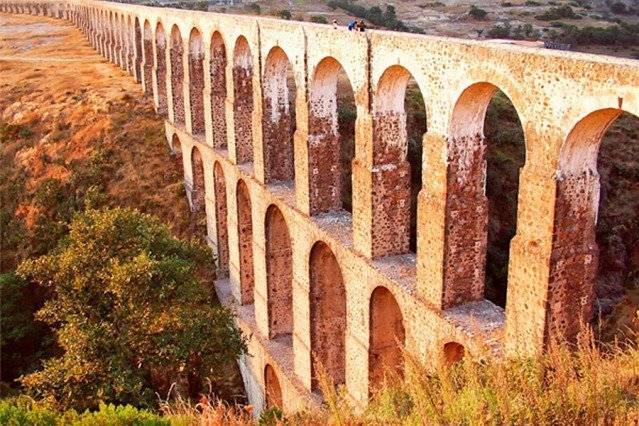
If you love museums and want to visit more, check out this website that lists all the museums in Mexico City.
Practical information to prepare your 4 days in Mexico City:
Is Mexico City safe?
If you look at the crime rate, it doesn’t seem safe, but if you stay in touristy areas, are careful about pickpockets, and take Ubers after sundown, you should be fine.
What to eat in Mexico City?
Mexico city is a paradise for foodies, from eating tacos on the street to trying audacious dishes in fancy restaurants, you’ll find every type of food you want. I really recommend trying the street food or food market (there’s a great one near the Garibaldi Plaza). Here’s a few dishes you should try: tacos, huaraches, chile relleno, alambre, and gorditas. If you don’t like spicy food, don’t forget to ask “sin chile.”
As for drinks, Tequila is the national drink. You might also want to try Mezcal and Pulque, both alcohol are from cactus. In the soft drink category, try horchata (rice milk with cinnamon and vanilla) and agua de jamaica (hibiscus drink).
Where to stay in Mexico City?
For convenience, you can stay in the historic part of town near the Zocalo, or if you want something more residential, check out Roma or La Condesa, it’s also where you’ll find most bars and restaurants.
How to get around Mexico City
For the subway, you can buy tickets at any station (5 pesos) or get a card you can reload. It’s pretty easy to find your way around, just download a map beforehand.
For the Metrobus, you’ll need the card (the same as for the subways), or you ask someone to pass you on his card, and you give him the 6 pesos for the fare.
For other buses, you can pay the driver directly, but they don’t give change. The fare depends on the lines and is usually written on the side of the bus.
For itineraries you can use google maps, the metro and Metrobus lines are on it.
If you want to take a cab, use Uber or Didi. Be careful with taxis you stop on the street, not all are safe.
What to pack for Mexico City
- Layers – It can be pretty hot during the day when the sun is high and chilly the minute after if it gets cloudy. Nights are also pretty chilly;
- Raincoat and/or umbrella;
- A good day-cream or serum to protect your skin against pollution;
- Comfortable shoes (you’re going to walk a lot);
- A nice outfit if you plan on going out at night;
Other places you can easily visit from Mexico City:
- Tolantongo Cave and its natural thermal pools;
- Pachuca and its many nearby Pueblos Magicos;
- Taxco, a cute town known for its silver production;
Related articles to help you plan your trip to Mexico:
- Best cenotes in Valladolid, Yucatan
- Holbox Complete Travel Guide
- Travel essentials to help you save space when packing
Like it? Save it for later – 4 days in Mexico City:




